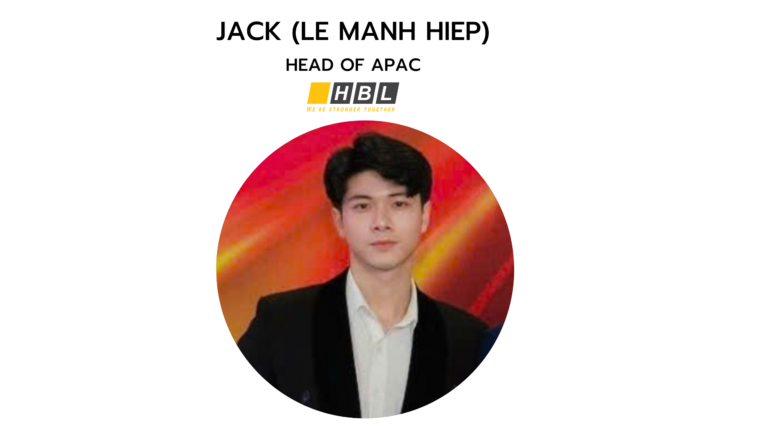Isa Mutaliev, founder and CEO of PTF Lab, explains how AI is set to transform the landscape of virtual sports advertising by enabling hyper-targeted, real-time ad personalization across global audiences. Technologies like computer vision and real-time rendering are already making it possible to show different ads to viewers watching the same event, unlocking new revenue streams for broadcasters and rights holders. AI is also powering emotion-aware and context-driven advertising, where brand messages sync with crowd reactions and game dynamics for deeper fan engagement. With innovations like interactive AR overlays and micro-targeted sponsorships, even smaller brands can now enter the arena with flexible ad formats. As the ecosystem evolves, compliance and ethical AI will play a critical role in scaling this transformation responsibly.
How do you think AI will change virtual advertising in sports over the next few years?
AI — and particularly computer vision — has removed key technical barriers that once made virtual advertising in sports seem futuristic or even impractical. Thanks to these advancements, what was once a niche concept has become one of the most promising frontiers in sports media.
The most immediate and impactful shift we’re seeing is multiregional ad targeting during live broadcasts. This means viewers in different parts of the world can see different virtual ads in real time — even while watching the exact same event.
This approach has already been adopted in football and other team sports, where it’s proven to significantly increase both sponsor relevance and inventory value. And now, thanks to the work we’re doing at PTF Lab, this model is becoming increasingly viable for combat sports — where traditional advertising infrastructure is limited, but global audience potential is massive.
The benefits are clear: rights holders can run localized campaigns without separate production feeds; brands connect with fans more meaningfully; and broadcasters unlock new monetization opportunities without disrupting the experience.
Take, for example, an MMA event in the UAE, where advertising for alcohol or betting is restricted. With virtual overlays, fans in countries with no such limitations can still see betting or beverage sponsors, while viewers in regulated markets see fully compliant alternatives. That flexibility is incredibly valuable.
To support this shift, the AI and computer vision systems we’ve built at PTF Lab are capable of producing multiple parallel feeds — each with region-specific virtual ads — rendered live and precisely tracked to the camera motion. It’s scalable, flexible, and already commercially viable.
Looking ahead, the next leap will be context-aware advertising. AI will recognize not just where an event is being viewed, but what’s happening on-screen — a high-tension moment, a standing exchange in a fight, or a quiet midfield pass — and adapt visuals accordingly. From there, we move toward audience-based segmentation (targeting viewers based on behavior or interest), and eventually toward true individual-level personalization in live sports advertising.
The direction is clear: we’re going from “one-size-fits-all” to dynamic, adaptive, personalized sponsorship — and AI is making it all possible.

What new AI technologies could reshape sports sponsorship?
AI isn’t just improving how sponsorships look — it’s transforming who can participate, how campaigns are sold, and what kinds of experiences brands can create.
First, AI unlocks greater flexibility and accessibility in sponsorship. Rights holders are no longer limited to selling large, static inventory blocks. With virtual ad tech, they can offer micro-packages — like 30 seconds of exposure during a specific round — making entry possible for brands with smaller budgets or niche regional interests. This modularity lowers the barrier to entry and expands the pool of potential sponsors.
While LED panels in stadiums solve part of this problem, they’re expensive, limited to certain venues, and can’t be installed on a ring canvas or in the center of a football pitch. In contrast, virtual overlays require no physical infrastructure, are instantly deployable, and cost significantly less to scale globally.
We’re also seeing rapid growth in AI-powered AR sponsorships — animated 3D brand assets that become part of the live broadcast. A latest example: Corona’s 3D beach on a baseball field, timed perfectly with a key play. These are immersive, emotionally synced brand moments that capture attention and often go viral.
Our product team at PTF Lab is focused on enabling both traditional overlays and immersive AR activations, designed to respond not only to broadcast dynamics, but also to the narrative flow of the event itself. As a result, brands become part of the storytelling — not a break in it.
Could AI soon adjust ads in real time based on how fans react?
Yes — and this is where things get especially exciting. AI is starting to understand not just the structure of a sports broadcast, but its emotional pulse. Using tools like computer vision, audio analysis, and social sentiment tracking, AI can respond to crowd reactions, key moments, or momentum shifts — and trigger live ad experiences accordingly.
We’ve already seen powerful use cases in the real world. One standout example is Affectiva’s collaboration with NTT Data during The Open golf championship, where AI analyzed viewers’ facial expressions to detect emotional highs throughout the tournament. These insights were used to surface the most engaging moments for fans in real time, creating a smarter, emotionally tuned broadcast.
Now imagine combining that level of emotional intelligence with PTF Lab’s AI-powered virtual ad engine — enabling not just reactive, but emotionally responsive brand activations. A sudden cheer, a surge in tension, or a dramatic finish could automatically trigger a custom visual ad that matches the moment in tone and intensity.
We believe we’re not far from this reality — and when it arrives, it will transform how brands connect with fans on a visceral level, in real time.
Imagine a fighter landing a knockout — and in that exact moment, virtual flames ignite around the sponsor’s logo at the center of the canvas, bursting to life as the crowd erupts. A branded moment that feels part of the fight, not separate from it — synced to emotion, tailored to the audience, and impossible to miss.
What makes this possible is the rise of generative AI and real-time analytics. Instead of scheduling ad placements manually, brands will soon be able to define creative logic — and let the system decide when and how to activate it, depending on what’s unfolding on screen.
At PTF Lab, we’ve already built the tools to deliver AR and 3D brand integrations into live sports broadcasts — creating immersive ad formats that enhance the visual experience. While our system doesn’t yet respond to emotional shifts or real-time audience sentiment, we recognize that this kind of responsiveness could become an important milestone in the evolution of virtual advertising. It’s not a current priority for us — but it’s certainly on the long-term horizon as the ecosystem matures and real-time audience data becomes more accessible and actionable.
How will AI make sports ads more personalized for different audiences?
AI is moving us from regional targeting to deep personalization. The idea is simple: every fan sees the same game — but not the same ad experience.
Using anonymized data such as location, viewing habits, and platform type, AI has the potential to tailor virtual ads to different viewer segments — or even individuals. A fan watching from Brazil might see a local telecom offer, while a viewer in Canada could be shown winter sports gear. A casual mobile viewer might receive fast-food delivery promos, while a dedicated fan watching on a smart TV could see official merchandise.
While full individual-level personalization in live sports is still on the horizon, the infrastructure is already forming. As more real-time audience data becomes available, these kinds of context-aware, behavior-driven ad experiences will likely become a new standard in sports broadcasting.
This level of personalization is already supported by the infrastructure we’re building at PTF Lab, where each stream — or even each viewer — can receive dynamically rendered ad content, adapted in real time to their context.
The result is a win for everyone:
– Fans get more relevant, less intrusive messaging
– Brands see better performance and deeper engagement
– Rights holders unlock new inventory and revenue potential
– Sports marketing agencies gain flexibility to activate more tailored campaigns
– OTT platforms can offer customized streams across different sports and audience segments
As personalization becomes more precise — and more ethically governed — it has the power to transform advertising into something that’s not just seen, but felt: timely, useful, and welcomed.
What makes it difficult to add AI to existing broadcast systems, and how can that be fixed?
The main challenge lies in the legacy nature of most broadcast infrastructure. These systems were designed for predictable, stable signal flow — not real-time AI inference, data fusion, or cloud-based rendering.
Latency constraints, lack of standardization, and incompatible formats all stand in the way of innovation. But replacing the entire pipeline isn’t realistic — especially at scale.
The approach we’ve taken at PTF Lab is to build modular, cloud-friendly AI systems that plug into what broadcasters already use. Our goal is low-friction integration: tools that work with SDI or IP feeds, that can be hosted locally or in the cloud, and that allow rights holders to upgrade capabilities without overhauling their infrastructure.
We’re now finalizing a cloud-native version of our platform that supports ingest, analysis, and virtual insertion with real-time rendering — even for clients running older or hybrid workflows. That’s how we see the future: evolution, not disruption.
As AI rules and regulations change, how will they affect virtual sports ads?
We view evolving AI regulation as a positive force, especially in a field like virtual advertising, where trust and transparency are critical. When digital overlays become personalized, reactive, or algorithmically generated, viewers — and brands — need to know that they’re operating within a clear, ethical framework.
That’s why our platform at PTF Lab is built with compliance in mind from the start: customizable disclosures, region-aware ad targeting, and architecture that respects GDPR and other global standards. For us, building with regulation isn’t a constraint — it’s a competitive advantage.
Ultimately, regulation creates structure. And structure creates trust. That’s what unlocks long-term growth and adoption.
How can AI-driven interactive and AR ads make watching sports more exciting for fans?
Interactive and AR ads allow brands to be part of the moment, not just present within it. When powered by AI, these formats can react to live game conditions, fan sentiment, and even regional behaviors — making them feel natural and engaging.
We’re designing our creative tools at PTF Lab around that principle: helping rights holders and sponsors launch emotionally resonant moments — like a 3D mascot celebrating a win or an AR offer appearing just after a goal.
These activations invite attention and participation. They’re more than ads — they’re extensions of the experience.
What new ways could AI help broadcasters make money from ads?
AI doesn’t just enable more monetization — it enables smarter monetization. With tools like real-time content adaptation, geo-targeting, and scalable multi-market delivery, a single live event can support multiple parallel brand campaigns, each tailored to a specific region.
At PTF Lab, we’re building monetization infrastructure that allows broadcasters to sell ad space not just by the minute — but by market. That means sponsors can target specific regions with relevant messaging, and broadcasters can multiply the value of the same inventory across different feeds.
This creates new flexibility for rights holders and OTT platforms alike — enabling them to unlock regional sponsorships, localize ad strategies, and scale revenue without altering the core production.
AI makes it possible to move from a fixed, one-size-fits-all model to a responsive, market-aware monetization approach that fits the way modern sports are consumed.






